Floating villages. They're the main attraction of Inle Lake, a required stop on any Myanmar itinerary. The lake isn't just a body of water. To residents, it means transportation, food and economy.
I took a boat tour with some travelers from my hotel, Queen Inn. Jeroen and Keetie were from the Netherlands. Their great travel stories got me interested in visiting another country I hadn't considered before.
My favorite moment was as our motorboat entered the floating villages. A chorus of "Hello!" came from everywhere. Young children ran up, excitedly shouting to us from their wooden stilt houses and boats.
The majority of places we visited were craft workshops. Sadly, the Inle Lake workshops were the only blatantly touristy venues I encountered in Myanmar. Everywhere else in the country, the attractions felt more genuine.
At Inle Lake, a lot of the establishments seemed set up to sell stuff to travelers. The promises of "I give you good price!" could have happened in any country in Asia.
One example was this silversmith. When we first entered, the shop floor was abuzz with activity: silversmiths assembling jewelry, pumping fire under hot coals, etc. The guy with the best English explained what each artisan was doing, then he hustled us into a gift shop.
I sneaked back to the shop floor 5 minutes later. All the "silversmiths" were gone, probably chewing betel nut or having a smoke. Busted! Total scam.
One of the most famous attractions at Inle Lake is the "Jumping Cat" monastery. The prevailing theory was the monks got so bored of meditation and isolation that they trained cats to jump on command.
For someone expecting a circus-style act with lions leaping through flaming hoops, the jumping cats were a bit anticlimactic. Walking around looking at the Buddha statues was more rewarding.
Speaking of circus acts, we went to see the long-necked women. They're of the Padaung Hill Tribe. A Russian girl I'd met said you could also see long-necked women in Mae Hong Son in northern Thailand. They're the ones who escaped from Myanmar.
The majority of places we visited were craft workshops. Sadly, the Inle Lake workshops were the only blatantly touristy venues I encountered in Myanmar. Everywhere else in the country, the attractions felt more genuine.
At Inle Lake, a lot of the establishments seemed set up to sell stuff to travelers. The promises of "I give you good price!" could have happened in any country in Asia.
Jeroen (Netherlands) and Davina (Australia) chat outside the shop.
One example was this silversmith. When we first entered, the shop floor was abuzz with activity: silversmiths assembling jewelry, pumping fire under hot coals, etc. The guy with the best English explained what each artisan was doing, then he hustled us into a gift shop.
I sneaked back to the shop floor 5 minutes later. All the "silversmiths" were gone, probably chewing betel nut or having a smoke. Busted! Total scam.
One of the most famous attractions at Inle Lake is the "Jumping Cat" monastery. The prevailing theory was the monks got so bored of meditation and isolation that they trained cats to jump on command.
For someone expecting a circus-style act with lions leaping through flaming hoops, the jumping cats were a bit anticlimactic. Walking around looking at the Buddha statues was more rewarding.
Speaking of circus acts, we went to see the long-necked women. They're of the Padaung Hill Tribe. A Russian girl I'd met said you could also see long-necked women in Mae Hong Son in northern Thailand. They're the ones who escaped from Myanmar.
I don't know, it just felt strange to watch women with abnormally long necks while they did weaving. A saleswoman explained that long necks were a symbol of beauty in their tribe. They start young, and add more rings to their necks as they get older.
Strangely enough, the youngest long-necked girl kept staring at me as I took photos. (She's the one on the far right in the second photo). It was like she thought I was the exotic, interesting person.
Our last stop was a cigarette-making plant. All the cigarettes were hand-rolled by women, some of them young girls.
This was the only workshop that felt real. I commented to other travelers, "It gives you the feeling that they were working before we arrived, and they'll keep working after we leave."
Jeroen, one of the Dutch backpackers, set out to calculate how much a cigarette girl earned in one day. They got paid 2 kyat (US$0.002) per cigarette. If a girl made 1,000 in one day, she could make US$2. That's depressing.
On a more positive note, Myanmar's infamously small travel world worked its magic again. In Yangon, I'd met a group of cool French and Belgian backpackers at the Shwedagon Paya. We were supposed to meet up in Mandalay next, but I wasn't able to get a plane ticket.
While I was wandering around Nyaungshwe (the gateway city for Inle Lake), I ran into the group! We caught up on each other's travels and arranged to have dinner together at the Golden Kite Restaurant.
Their laughter, conversation and bubbling energy were fun to be around. It reminded me why I travel.
Strangely enough, the youngest long-necked girl kept staring at me as I took photos. (She's the one on the far right in the second photo). It was like she thought I was the exotic, interesting person.
Our last stop was a cigarette-making plant. All the cigarettes were hand-rolled by women, some of them young girls.
This was the only workshop that felt real. I commented to other travelers, "It gives you the feeling that they were working before we arrived, and they'll keep working after we leave."
Jeroen, one of the Dutch backpackers, set out to calculate how much a cigarette girl earned in one day. They got paid 2 kyat (US$0.002) per cigarette. If a girl made 1,000 in one day, she could make US$2. That's depressing.
On a more positive note, Myanmar's infamously small travel world worked its magic again. In Yangon, I'd met a group of cool French and Belgian backpackers at the Shwedagon Paya. We were supposed to meet up in Mandalay next, but I wasn't able to get a plane ticket.
While I was wandering around Nyaungshwe (the gateway city for Inle Lake), I ran into the group! We caught up on each other's travels and arranged to have dinner together at the Golden Kite Restaurant.
Their laughter, conversation and bubbling energy were fun to be around. It reminded me why I travel.
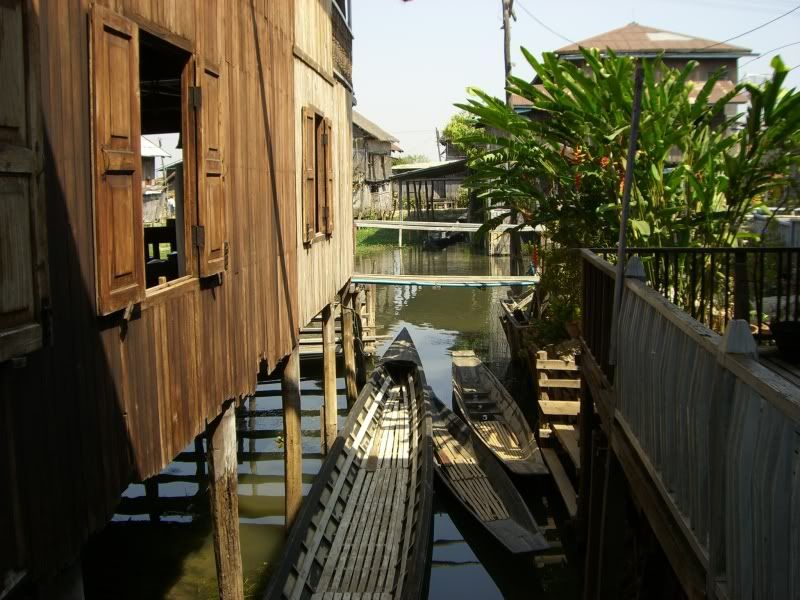
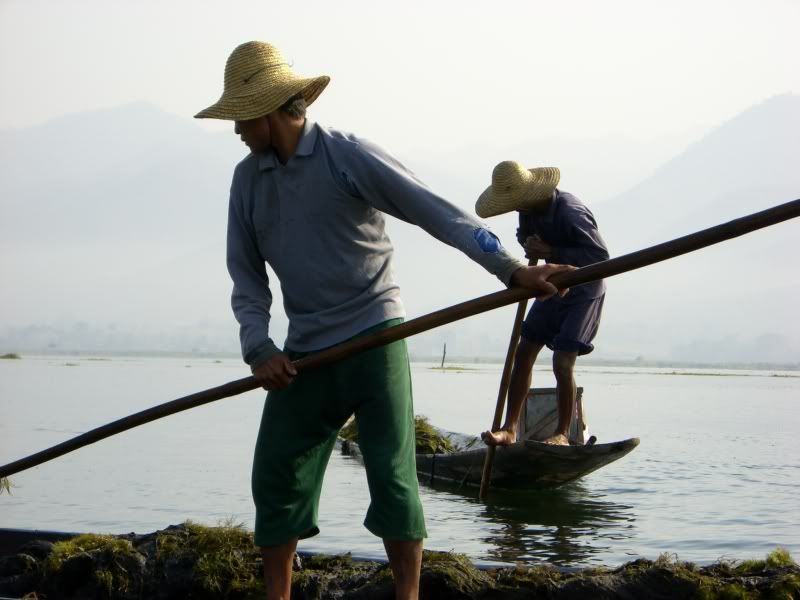

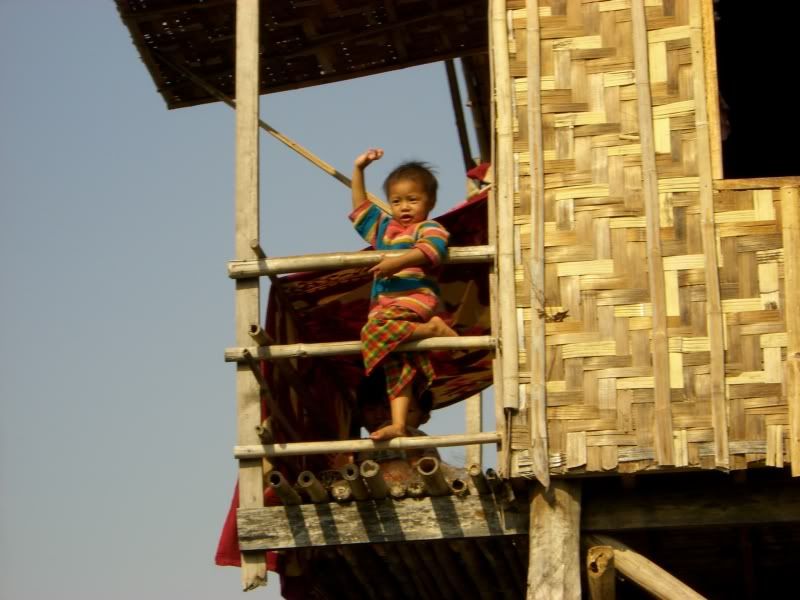
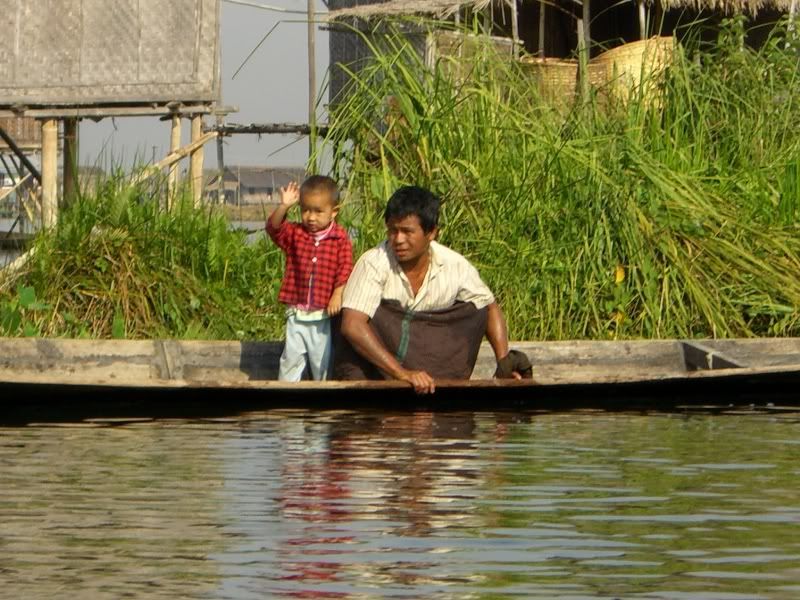
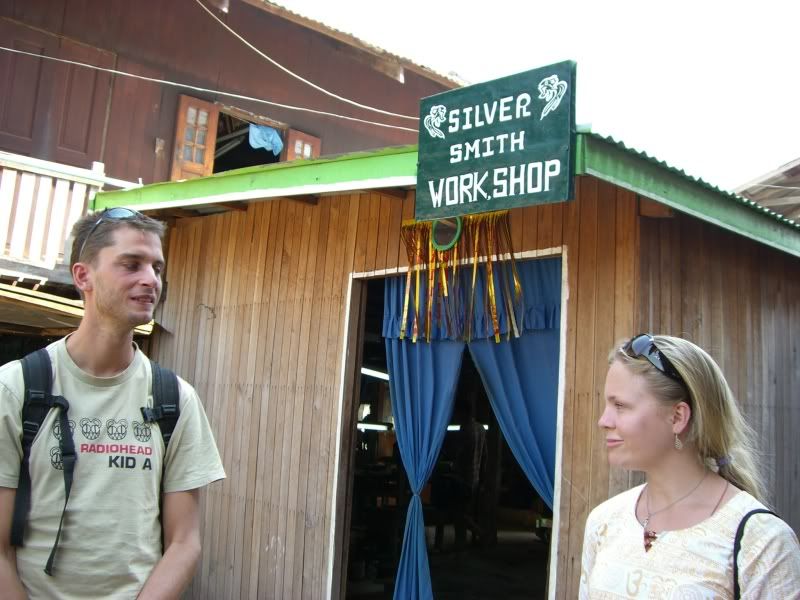
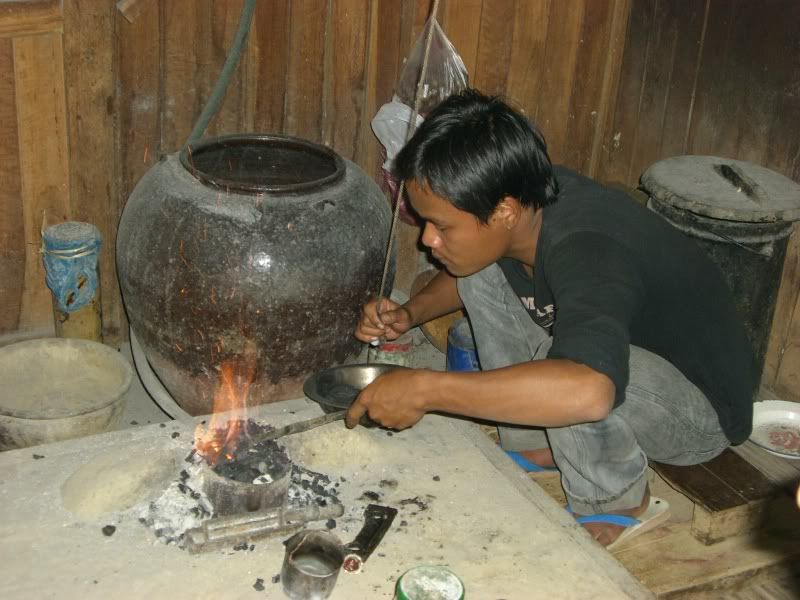
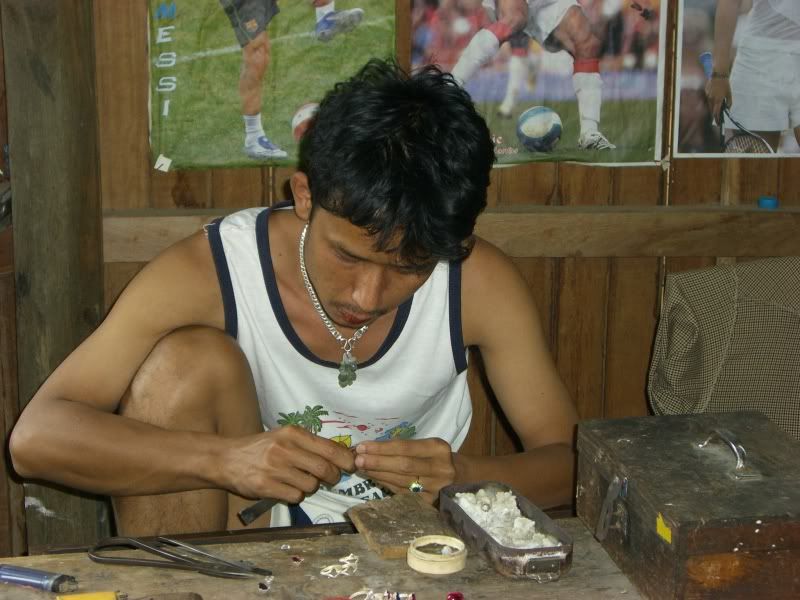
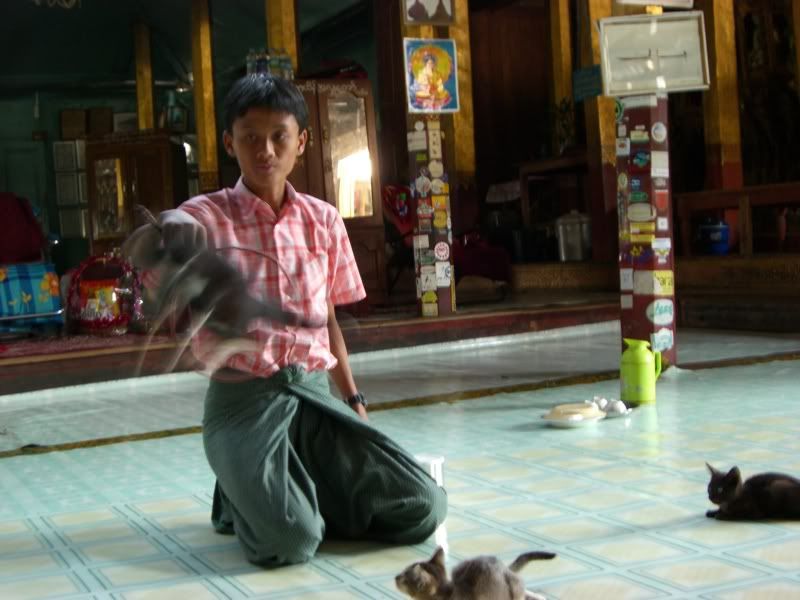
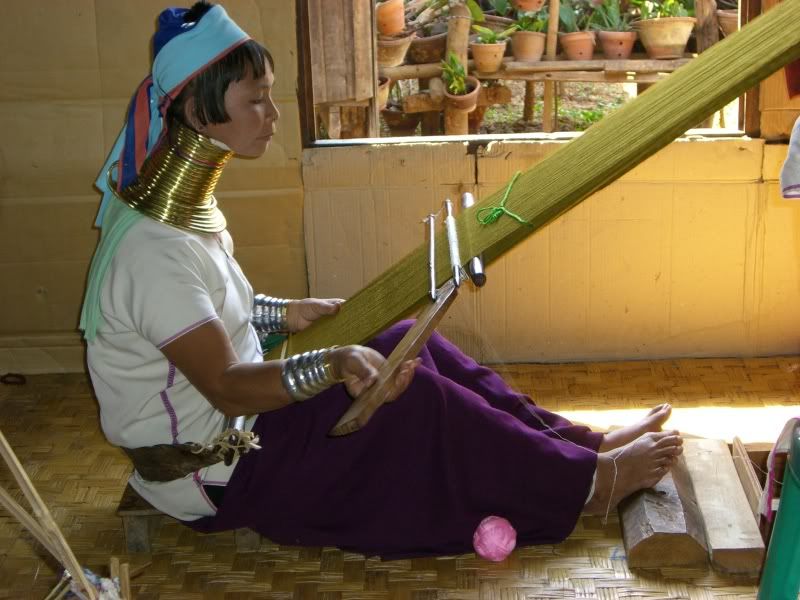
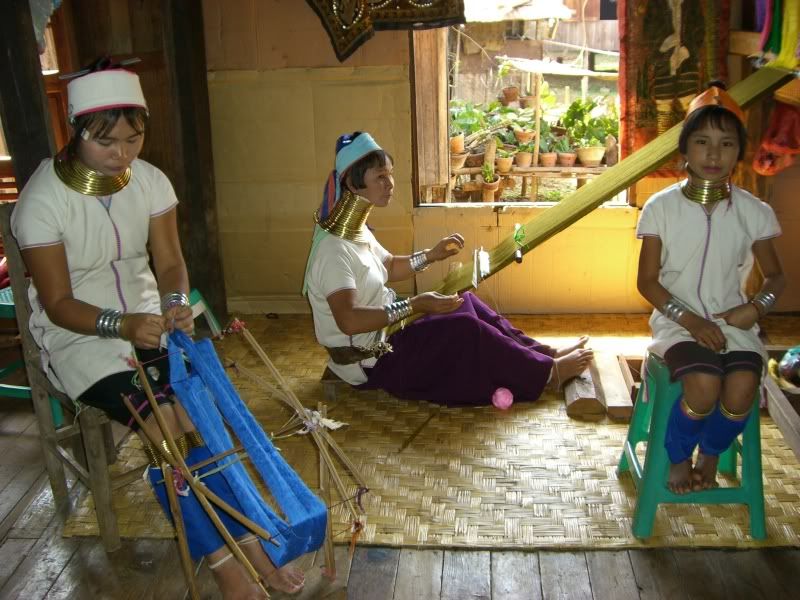
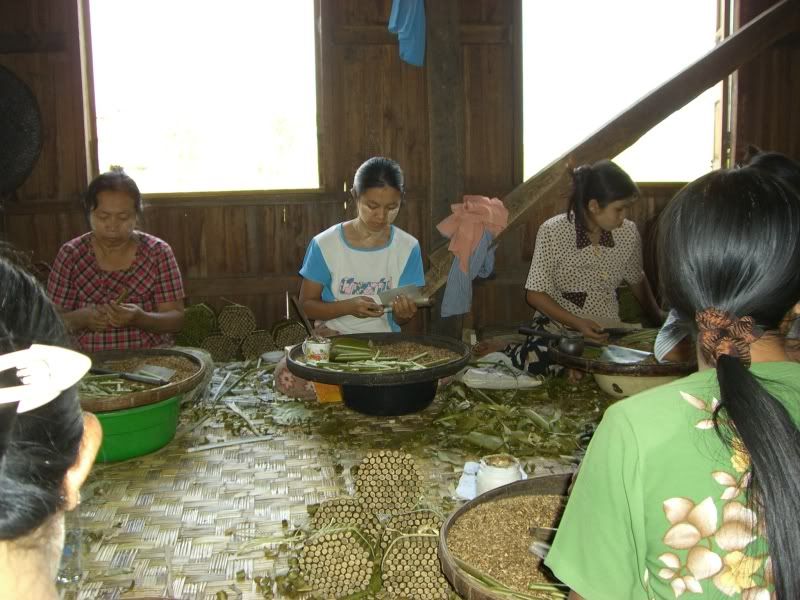
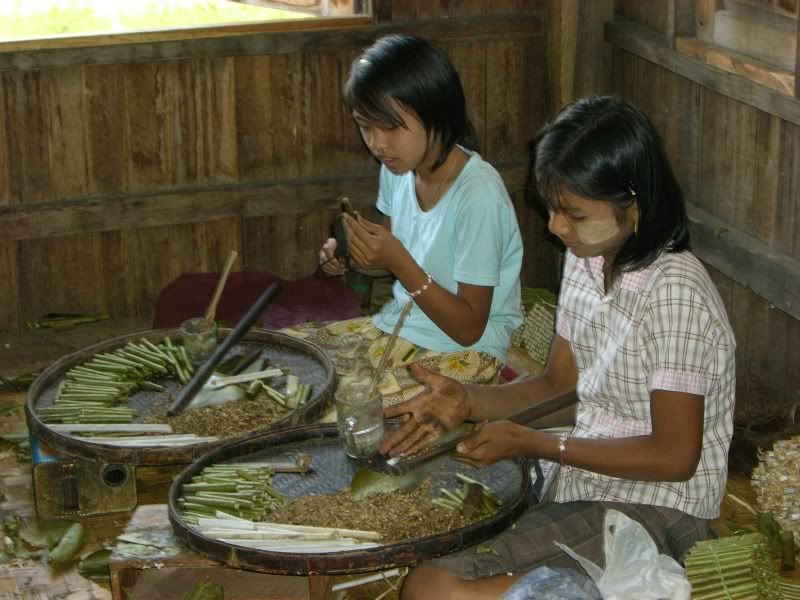
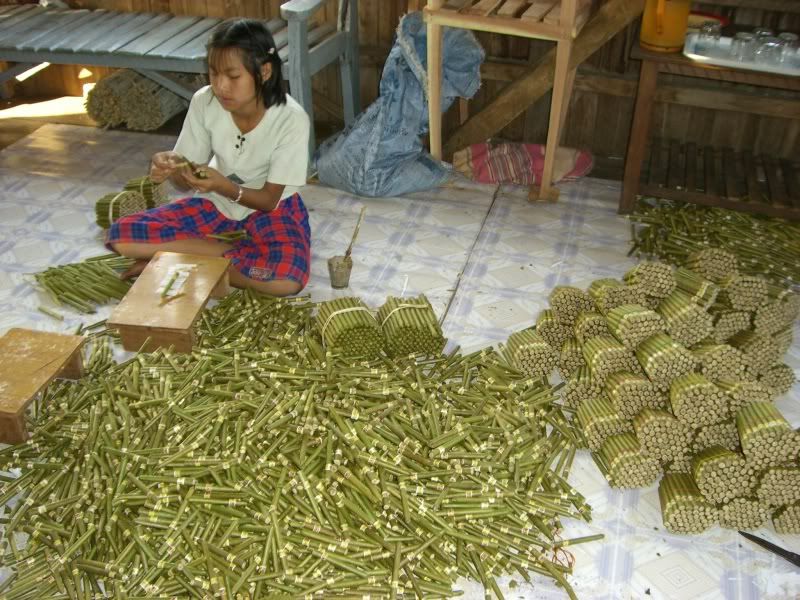
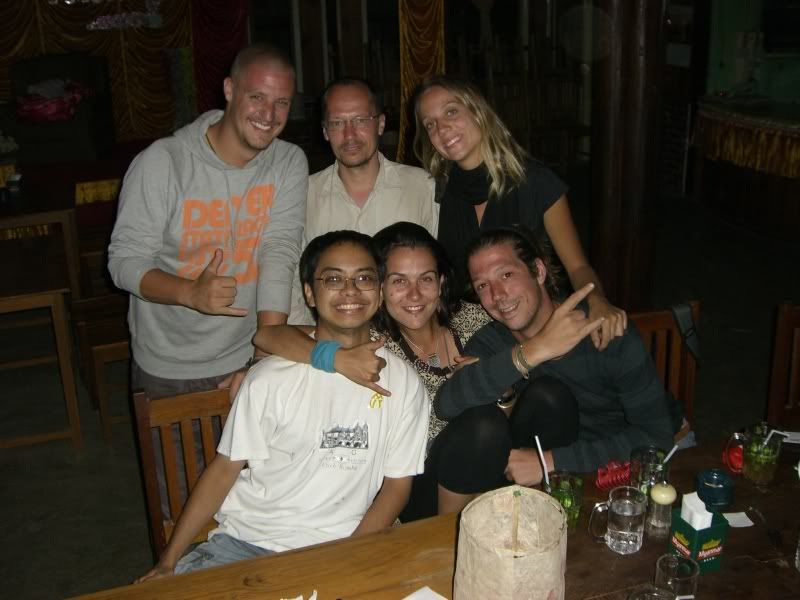




2 comments:
A little precision about your ciagarette:) They're call Cheroot!
Cheroots are traditional in Burma and India, consequently, popular among the British during the days of the British Empire. They are often associated with Burma in literature:
'Er petticoat was yaller an' 'er little cap was green,
An' 'er name was Supi-yaw-lat -- jes' the same as Theebaw's Queen,
An' I seed her first a-smokin' of a whackin' white cheroot,
An' a-wastin' Christian kisses on an 'eathen idol's foot:
—Rudyard Kipling, (1892) "On the Road to Mandalay," from Barrack-room Ballads
"My brother was unlike us in some things, Sahib. He was fond of the sharab called 'Whisky' and of dogs; he drank smoke from the cheroot after the fashion of the Sahib-log and not from the hookah nor the bidi; he wore boots; he struck with the clenched fist when angered; and never did he squat down upon his heels nor sit cross-legged upon the ground. Yet he was true Pathan in many ways during his life, and he died as a Pathan should, concerning his honour (and a woman). Yea—and in his last fight, ere he was hanged, he killed more men with his long Khyber knife, single-handed against a mob, than ever did lone man before with cold steel in fair fight."
—Captain Percival Christopher Wren, I.A.R., 1912, Driftwood Spars
Apparently, Cheroot smoking was also associated with resistance against tropical disease in India. Verrier Elwin wrote in his 1957 forward to Leaves from the Jungle: Life in a Gond Village,
"A final thing strikes me as I re-read the pages of the Diary that follows is that I seem to have spent much of my time falling ill. I attribute this to the fact that in those days I was a non-smoker. Since I took to the cheroot, I have not had a single attack of malaria, and my health improved enormously in later years." (Leaves from the Jungle: Life in a Gond Village, OUP 1992, p.xxix)
A reader will note that malaria was most often contracted by mosquito bites and most likely the cheroot's aroma, by sticking to the skin and hiding the sweat's scent, which draws mosquitoes, contributed to make the smoker less of a target for their bites.
hãng máy bay eva
đại lý bán vé máy bay đi mỹ
mua vé máy bay korean air
đặt vé máy bay đi mỹ ở đâu
giá vé máy bay đi canada
Những Chuyến Đi Cuộc Đời
Ngau Hung Du Lich
Tri Thức Du Lịch
Post a Comment